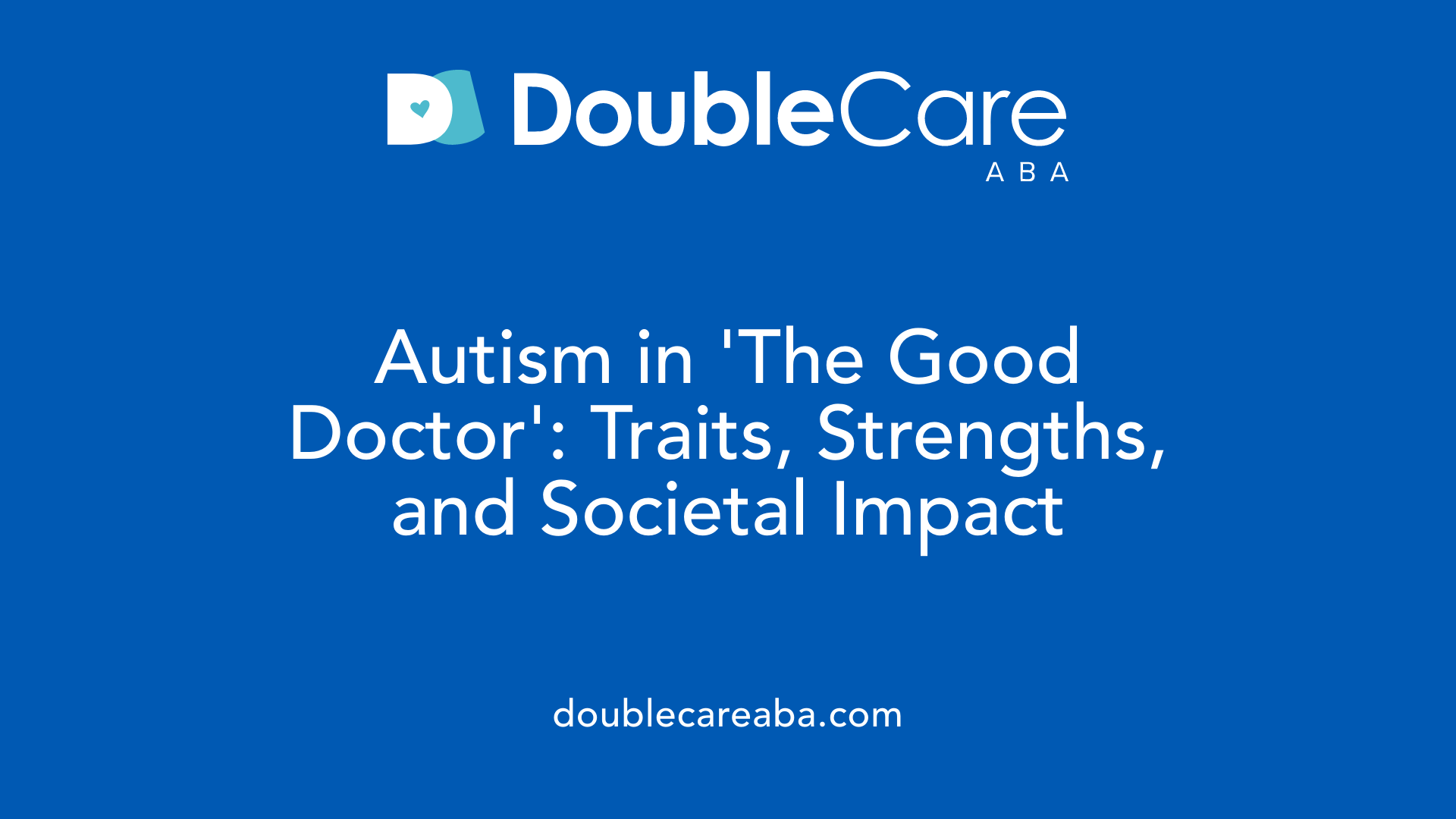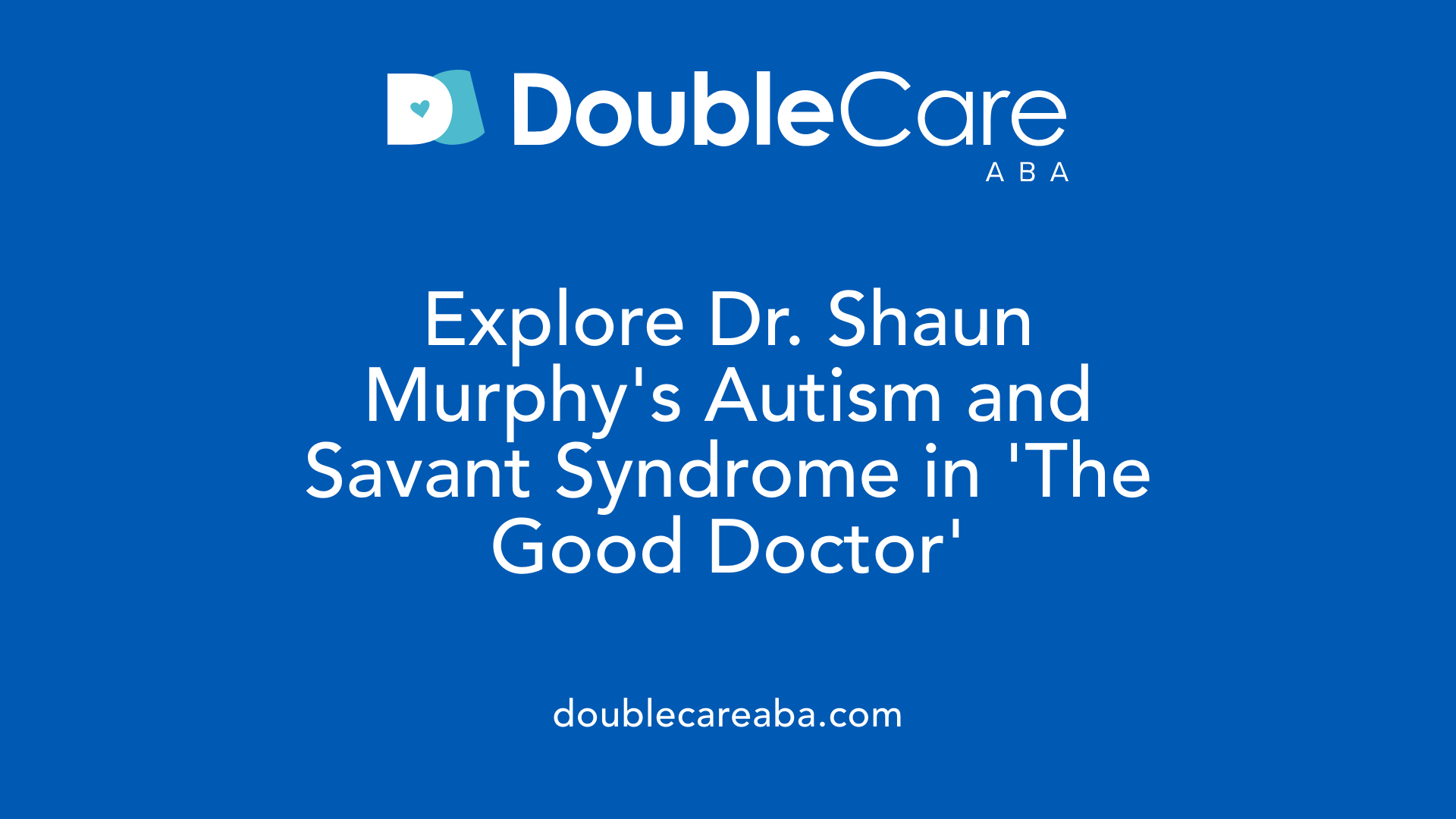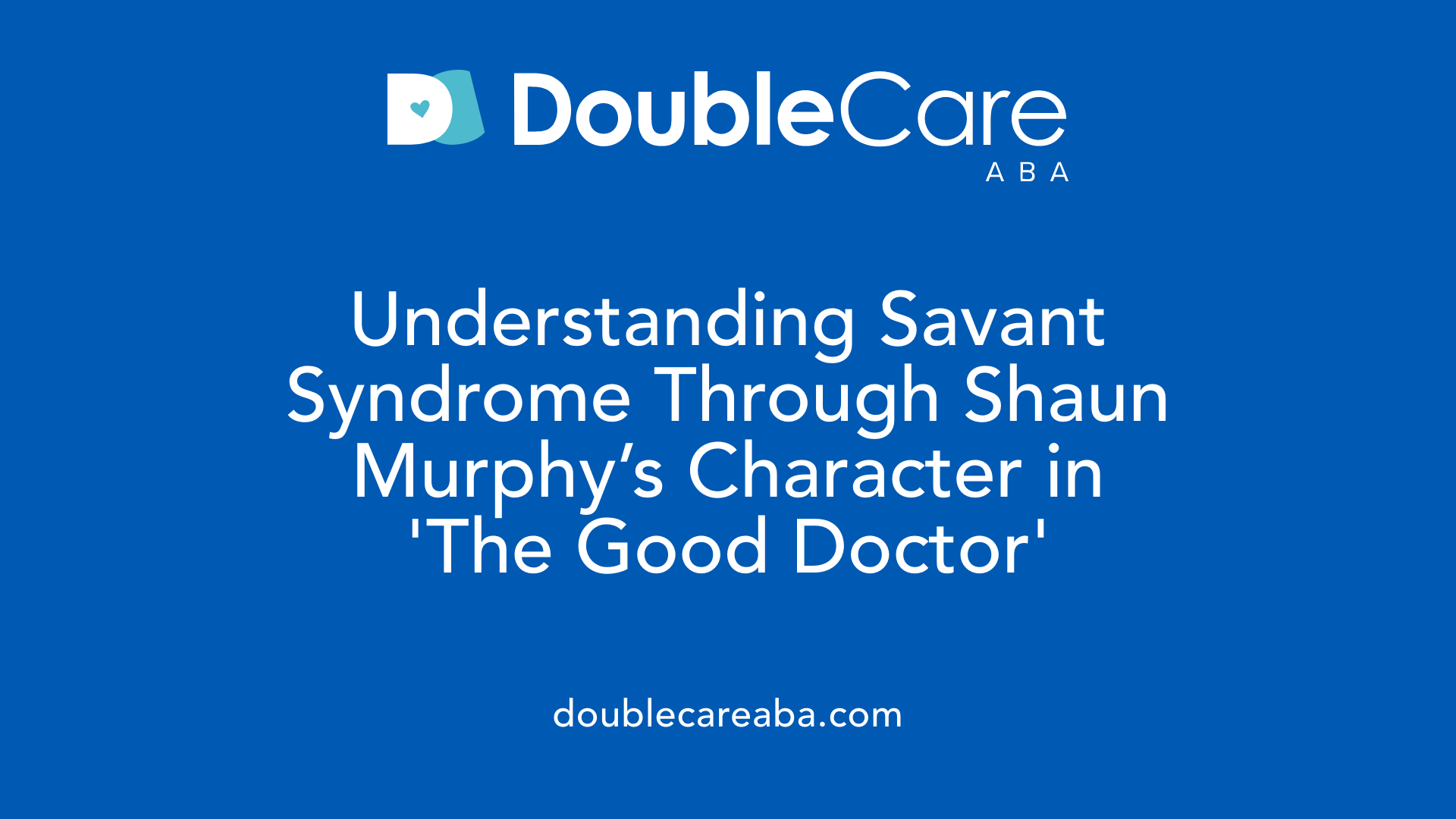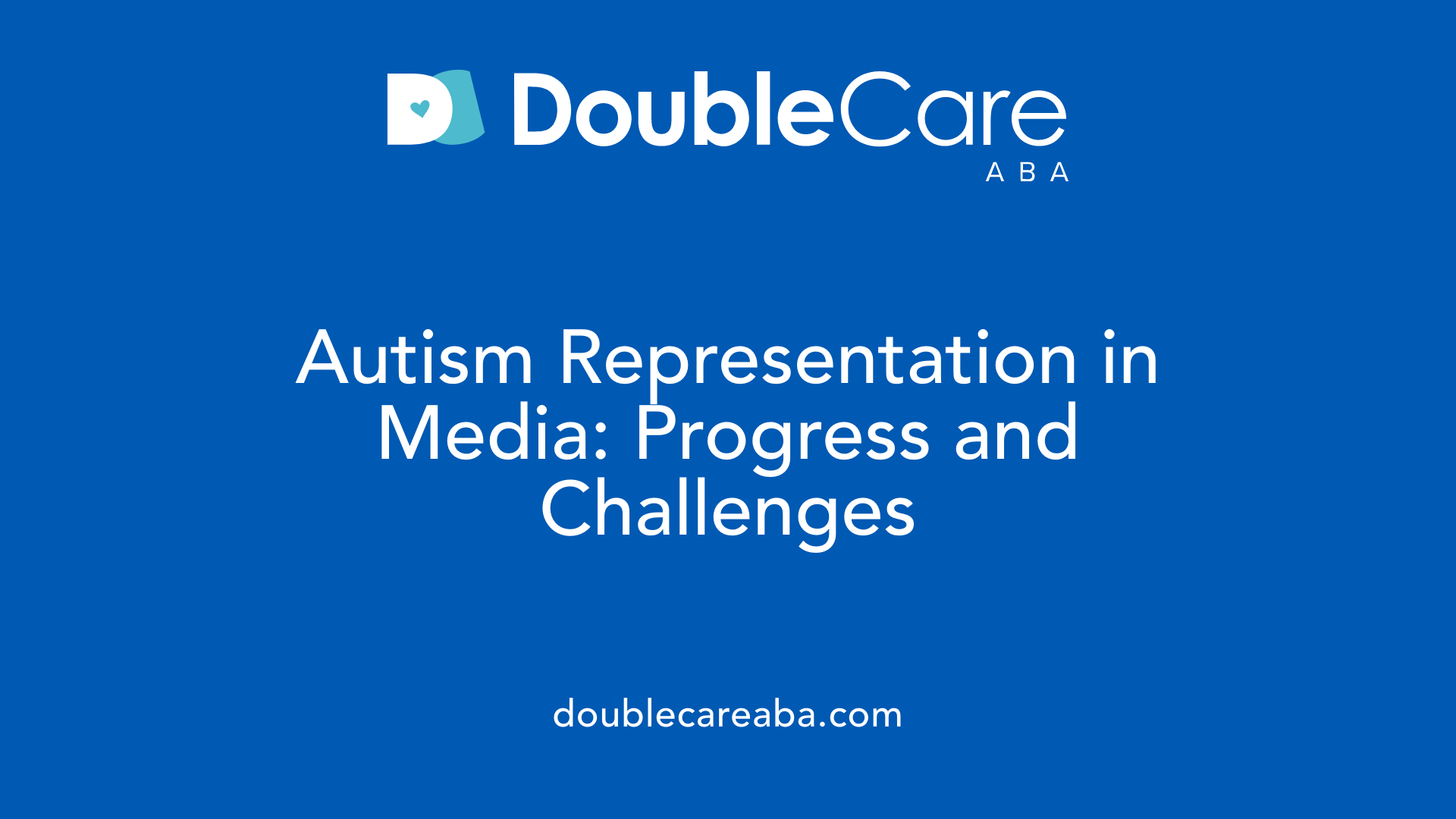Does The Good Doctor Have Autism?
Understanding Autism through 'The Good Doctor'

Introduction to Autism and Its Representation in Media
'The Good Doctor' has brought increased awareness to autism spectrum disorder (ASD) through its portrayal of Dr. Shaun Murphy, a young surgeon with autism and savant syndrome. This series has sparked important conversations about the authenticity of autism representation in television, highlighting both the strengths and challenges faced by individuals on the spectrum. As media plays an influential role in shaping public perceptions, understanding the nuances of this portrayal is essential to appreciate its impact and limitations.
Does The Good Doctor Have Autism?
Is the character Dr. Shaun Murphy in 'The Good Doctor' depicted as autistic?
Yes, Dr. Shaun Murphy is portrayed as having autism and savant syndrome in the series. His character is designed to reflect many aspects associated with autism, such as social difficulties, sensory sensitivities, and extraordinary perceptual abilities.
What does the show reveal about Shaun's diagnosis?
Shaun Murphy's diagnosis includes autism spectrum disorder (ASD), specifically Asperger’s Syndrome, and savant syndrome. The character displays traits like strict adherence to routines, difficulty interpreting social cues, and heightened perception — extensions of autism as understood in real life.
Does Freddie Highmore, the actor, have autism?
Although Freddie Highmore effectively portrays Shaun Murphy, he does not personally have autism. To enhance authenticity, Highmore has drawn from relatives with ASD to better understand and depict Shaun’s experiences convincingly.
How does the series approach autism portrayal?
The show makes intentional efforts to depict Shaun's behaviors realistically, illustrating sensory sensitivities, such as distraction by environmental sounds, and behavioral traits like hand-flapping during stress. It aims to promote awareness and challenge stereotypes, emphasizing that individuals with autism are diverse and capable.
What has been the response to this portrayal?
While the series has been praised for its nuanced approach, it also faces criticism for relying on stereotypes and the 'autistic savant' trope, which can oversimplify the autism spectrum. Nonetheless, it sparked important conversations about perceptions and acceptance.
| Aspect | Description | Additional Notes |
|---|---|---|
| Diagnosis in Series | Autism and savant syndrome | Focus on Asperger’s traits and exceptional abilities |
| Actor's Autism Status | Freddie Highmore does not have autism; uses family experience for role accuracy | Emphasizes portrayer's commitment to authenticity |
| Traits Depicted | Social challenges, sensory sensitivities, routines, perceptual skills | Based on real autism behaviors, though some stereotypes exist |
| Public and Critical Reception | Mixed, with appreciation for realistic elements and critique for stereotypes | Shows evolving understanding of representation |
This depiction in 'The Good Doctor' brings awareness to the spectrum of autism, illustrating that individuals on the spectrum are multifaceted. The series continues to evolve, with recent additions of autistic actors to enhance authenticity.
How is autism portrayed in 'The Good Doctor'?

Traits and behaviors of Shaun Murphy
Dr. Shaun Murphy, the central character in 'The Good Doctor', is depicted as having autism and savant syndrome. His behaviors often reflect characteristics typical of Asperger’s Syndrome, a form of autism. Shaun exhibits a strong adherence to routines and displays heightened perception of sensory stimuli, often noticing small details or patterns that others miss. His exceptional ability to visualize complex medical cases underscores his savant skills, which are a prominent part of his character.
Shaun's behaviors include playing with his hands during stressful moments, difficulty understanding social cues, and sometimes sharing more information than necessary. These traits showcase his challenges with nonverbal communication and social interaction, accurately reflecting aspects of Asperger’s according to experts and individuals on the spectrum.
Depiction of social and sensory challenges
The show emphasizes Shaun’s difficulties with social cues, such as trouble in leaving out irrelevant information or interpreting others' emotions. His challenges with eye contact and understanding sarcasm or humor further depict common social hurdles faced by autistic individuals.
Sensory sensitivities are also portrayed, with Shaun finding environmental noises distracting or overwhelming. For instance, loud sounds or hectic environments can cause Shaun to become visibly distracted or agitated. These sensory sensitivities are portrayed as natural reactions and part of his autism, promoting awareness of the sensory experiences many autistic people share.
Portrayal of strengths like exceptional skills
One of the show’s main focuses is highlighting Shaun’s remarkable abilities. His heightened perception allows him to notice minute details, which often leads to accurate diagnoses or innovative solutions in surgical procedures. The character’s visual imagery of the human body emphasizes his unique skill set, demonstrating that autism can be associated with extraordinary talents.
Throughout the series, Shaun’s strengths are balanced with his social and sensory challenges, showing him as a well-rounded individual who can excel professionally and lead an independent life. The show underscores that autism does not define what a person can achieve and that neurodiversity brings valuable perspectives.
| Aspect | Description | Example |
|---|---|---|
| Autism traits | Social difficulties, routines, sensory sensitivities | Jeux with hands, distraction by sounds |
| Strengths | Exceptional perception, pattern recognition | Visualizing anatomy, noticing subtle cues |
| Societal themes | Acceptance, diversity, challenging stereotypes | Promoting understanding and empathy |
| Actor and portrayal | Freddie Highmore plays Shaun, who does not have autism | Focus on authentic character traits |
While the portrayal aims to depict autism realistically, it has faced criticism for relying on stereotypes at times, such as the savant trope. Nonetheless, it remains a significant effort to raise awareness and promote an inclusive understanding of neurodiversity.
Does the character Dr. Shaun Murphy in 'The Good Doctor' have autism?

Diagnosis and representation
Dr. Shaun Murphy, a character in the TV series 'The Good Doctor,' is depicted as having autism and savant syndrome. The show emphasizes his unique skills and challenges, such as social awkwardness, sensory sensitivities, and an extraordinary ability to notice small details, which are reflective of real-life autism traits.
Despite Shaun being portrayed as autistic, the actor Freddie Highmore, who plays him, does not have autism in real life. Highmore has expressed that he strives to bring authenticity to his role, drawing on his own experiences with family members who are on the autism spectrum. This effort aims to offer a nuanced portrayal, teaching viewers about the diversity and potential of autistic individuals.
The series incorporates input from autism experts and includes an autism consultant to ensure respectful and accurate representation. While some critics praise the show's thoughtful approach, others have raised concerns about stereotypes and the reliance on the 'autistic savant' trope.
Overall, 'The Good Doctor' seeks to depict Shaun Murphy not just through diagnoses but as a whole person with hopes, struggles, and capabilities, fostering greater understanding of autism.
What is Autism and Savant Syndrome?
Autism spectrum disorder (ASD) is a neurodevelopmental condition characterized by difficulties with social interaction, communication, and repetitive behaviors. Some individuals, like Shaun Murphy, also exhibit savant syndrome, which grants them extraordinary skills in specific areas. This dual diagnosis plays a central role in the show's character portrayal.
Common Traits Shown in Shaun
- Adherence to routines
- Sensory sensitivities (e.g., distractions caused by environmental sounds)
- Enhanced perception and pattern recognition
- Challenges in interpreting social cues
While Shaun's behaviors have been praised for reflecting aspects of real autism, critics argue the show sometimes simplifies or exaggerates these traits for dramatic effect.
What is savant syndrome and how is it portrayed in 'The Good Doctor'?

What is savant syndrome and how is it portrayed in 'The Good Doctor'?
Savant syndrome is a rare condition where individuals, often with significant mental disabilities or autism, display extraordinary abilities in specific areas such as memory, mathematics, music, art, or spatial skills. These talents are usually linked to exceptional and automatic memorization or pattern recognition.
In the TV series 'The Good Doctor', Shaun Murphy, the main character played by Freddie Highmore, has both autism and savant syndrome. His character demonstrates remarkable medical talents, including extraordinary recall of medical knowledge and visual skills that assist him in surgery. This portrayal emphasizes Shaun’s exceptional abilities as a surgeon, which are central to his identity within the show.
Shaun’s savant skills are depicted as an integral part of his personality, showcasing not only his talents but also the sensory sensitivities commonly associated with autism. For example, Shaun experiences sensory overload from certain environmental stimuli, which affects his behavior and focus.
The series strives to present a nuanced and respectful image, aiming to dispel stereotypes by highlighting the complexity of autism and savant syndrome. While the actor Freddie Highmore does not have autism himself, the show incorporated extensive research and consulted with autism experts to create a realistic and insightful depiction.
Overall, 'The Good Doctor' uses Shaun’s extraordinary abilities to draw attention to the potential of individuals with autism and savant syndrome, promoting a message of acceptance and understanding. Through this portrayal, viewers learn that these talents often coexist with challenges, emphasizing a balanced view of life with autism.
Representation of autism spectrum disorder in media

How is autism portrayed in 'The Good Doctor'?
Autism in 'The Good Doctor' is centered around Dr. Shaun Murphy, a surgical resident with autism and savant syndrome. The show highlights his extraordinary abilities, such as an exceptional memory and keen attention to detail, which aid him professionally. At the same time, it depicts his social challenges, sensory sensitivities, and reliance on routines—elements commonly associated with autism.
The series portrays Shaun as a complex individual, emphasizing that autism is a spectrum with varied experiences. It also tackles societal misconceptions, showing Shaun's interactions with colleagues and patients and illustrating how acceptance and support can help autistic individuals thrive. The show underscores the importance of understanding neurodiversity, promoting the message that autistic people can be highly capable and emotionally vulnerable alike. Overall, the series aims to raise awareness about both the strengths and hurdles faced by those on the spectrum, in a way that encourages empathy and inclusion.
Is the portrayal of autism in 'The Good Doctor' accurate or stereotypical?
While 'The Good Doctor' strives to depict autism with sensitivity, it has faced some criticism for leaning on stereotypes, particularly through the 'autistic savant' trope. This portrayal emphasizes extraordinary abilities, which, although present in some individuals, are not representative of all autistic people.
Critics argue that certain traits, like obsessive routines or social withdrawal, are exaggerated or oversimplified, risking misconceptions about autism. However, the show has made efforts to include voices from the autism community and to present Shaun as a well-rounded character living an active, independent life. The inclusion of autistic actors, like Coby Bird, and consulting with autism experts reflect ongoing steps toward more authentic representation.
The portrayal remains a work in progress, highlighting both societal perceptions and the importance of more nuanced and genuine portrayals of autism.
Other autism representations in media
What is the general perception of autism portrayal in media like 'The Good Doctor'?
'The Good Doctor' has made a significant impact by raising awareness about autism and encouraging viewers to understand the diversity of experiences within the spectrum. The show highlights that autism does not limit a person's potential and portrays Shaun Murphy as a skilled, independent medical professional.
However, critics argue that, in some cases, 'The Good Doctor' relies on stereotypes and certain tropes, such as the 'autistic savant' image, which can oversimplify or distort the reality of autism. Some believe the character's behaviors and challenges are sometimes exaggerated or not entirely representative of the broader spectrum.
Compared to other portrayals, shows like 'Heartbreak High' and 'A Kind of Spark' are praised for their more authentic representation. These series often feature autistic characters played by autistic actors, which brings authenticity and nuanced understanding to their roles.
The inclusion of autistic actors in such productions is seen as a step forward because it provides genuine perspectives and avoids stereotypes. It allows audiences to see the individuality of neurodiverse persons and promotes empathy.
While 'The Good Doctor' has had positive effects in awareness-raising, discussions continue about the importance of authentic and respectful depictions of autism in media.
| Show Title | Autistic Actor Involved | Notable Traits | Recognition |
|---|---|---|---|
| The Good Doctor | Freddie Highmore (neurotypical actor) | Autism and savant syndrome | Widely viewed, some criticism |
| A Kind of Spark | Various autistic actors | Authentic traits, diverse spectrum | Praised for realism |
| Heartbreak High | Autistic actors involved | Nuanced, real-life challenges | Recognized for depth |
Comparison with other shows
| Aspect | The Good Doctor | A Kind of Spark | Heartbreak High |
|---|---|---|---|
| Actor Representation | Non-autistic actor plays autistic character | Autistic actors featured | Autistic actors involved |
| Authenticity | Moderate, sometimes stereotyped | High, realistic | High, nuanced |
| Public Reception | Mixed: awareness vs stereotypes | Positive: authentic depiction | Highly praised |
| Impact on Awareness | Significant | Significant | Noted for depth |
In summary, while 'The Good Doctor' has played a vital role in bringing autism to mainstream media, ongoing conversations emphasize the value of authentic portrayals, especially those involving autistic performers. This shift aims to foster better understanding and challenge misconceptions, leading to more respectful and accurate representations across media platforms.
Are there real-life doctors with autism?

Are there real-life doctors with autism?
Yes, there are individuals on the autism spectrum working as doctors. These practitioners make up about 1% of the medical community, with many serving as general practitioners, psychiatrists, and specialists. These doctors often share their personal journeys to challenge stereotypes and promote greater acceptance of neurodiversity in healthcare.
Autistic doctors are known for their strengths, including exceptional attention to detail, intense focus, and high levels of empathy. These qualities are especially valuable in medicine, helping them deliver precise diagnoses and compassionate patient care.
However, they also face challenges such as sensory sensitivities—being overwhelmed by bright lights or loud noises—and sometimes confronting workplace discrimination or misunderstanding. Many succeed by developing coping strategies, such as creating sensory-friendly environments and seeking supportive workplace accommodations.
Organizations like Autistic Doctors International work actively to support these professionals. They foster peer connections, share resources, and advocate for more inclusive policies in medical settings.
Overall, the presence of autistic physicians demonstrates that with understanding, customized support, and acceptance, individuals on the spectrum can thrive and make vital contributions to medicine.
| Aspect | Details | Additional Notes |
|---|---|---|
| Presence in field | Approximately 1% of doctors are autistic | Includes GPs, psychiatrists, specialists |
| Strengths | Attention to detail, focus, empathy | Enhances patient care and diagnostic accuracy |
| Challenges | Sensory sensitivities, workplace bias | Require supportive strategies and accommodations |
| Support groups | Autistic Doctors International | Promotes community and advocacy |
| Broader impact | Demonstrates neurodiversity's value in medicine | Inspires aspiring doctors on the spectrum |
More info search query: Autistic doctors in medicine
Conclusion: Moving Towards Greater Understanding and Inclusion
'The Good Doctor' has significantly contributed to public discourse on autism by presenting a high-functioning autistic character with both strengths and challenges. While it has made strides in increasing awareness and challenging stereotypes, ongoing efforts are needed to enhance authentic representation, especially by involving autistic actors and consulting the autism community more directly. Recognizing the diversity of autism and promoting societal acceptance are essential steps toward a future where neurodiverse individuals are fully included, valued, and supported in all aspects of life, including media, education, and the workplace.
References
- My review of 'The Good Doctor' as an adult with autism
- The Good Doctor Autism Portrayal Examined - AutismCOE
- The Good Doctor and Autism - eVero Corporation
- "the Good Doctor" Goes Viral Amid Criticism of How It Depicts Autism
- Good Riddance to The Good Doctor | TIME - Time Magazine
- Shaun Murphy (The Good Doctor) - Wikipedia
- 'The Good Doctor' actor with autism talks about dream role
- The Good Doctor Changes the Way People See Autism
- Autistic Adults Review The Good Doctor - Autism Ontario
















